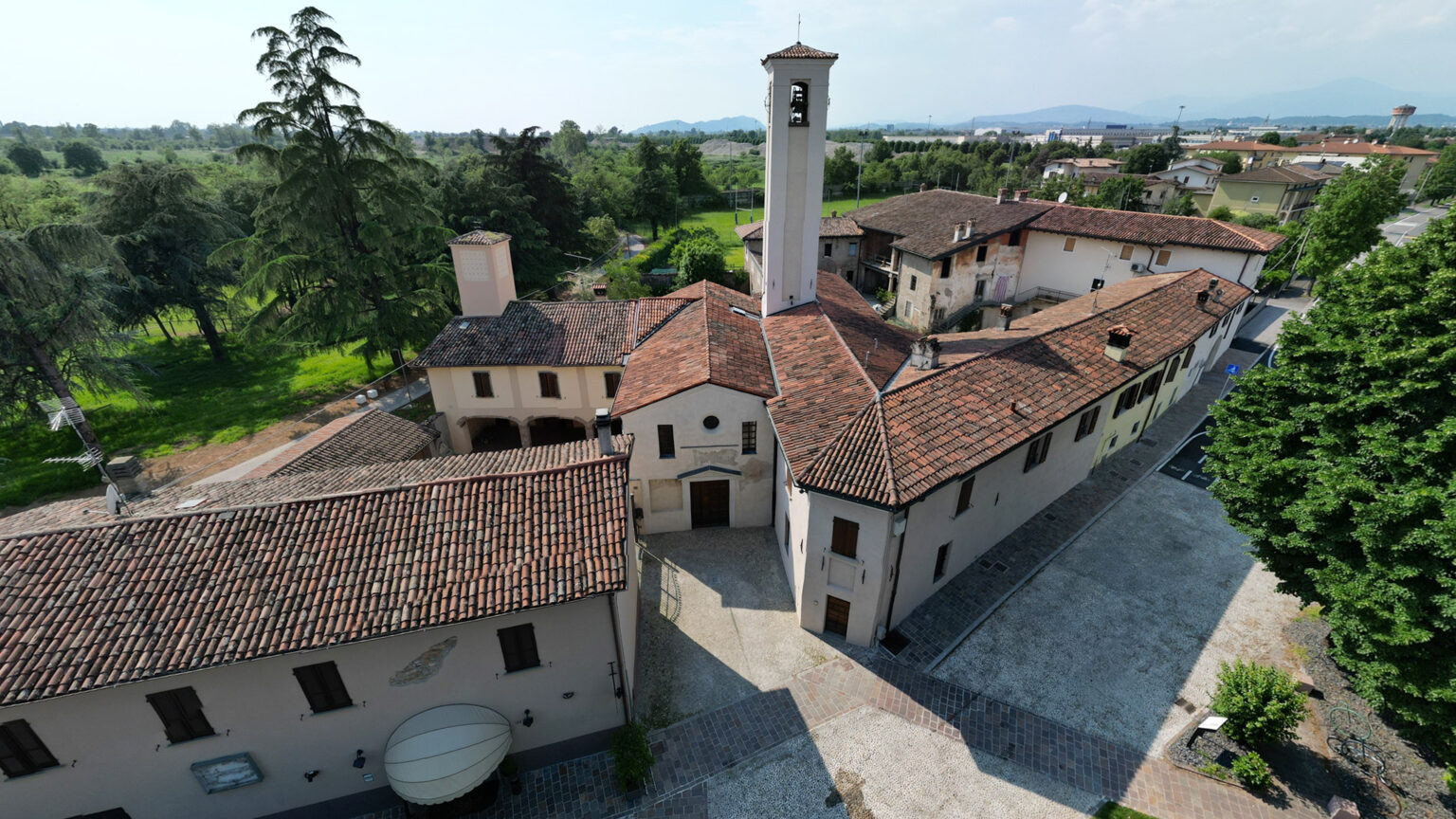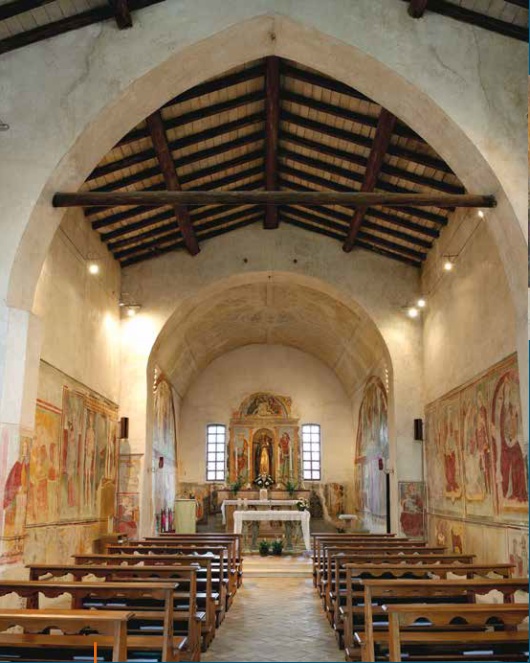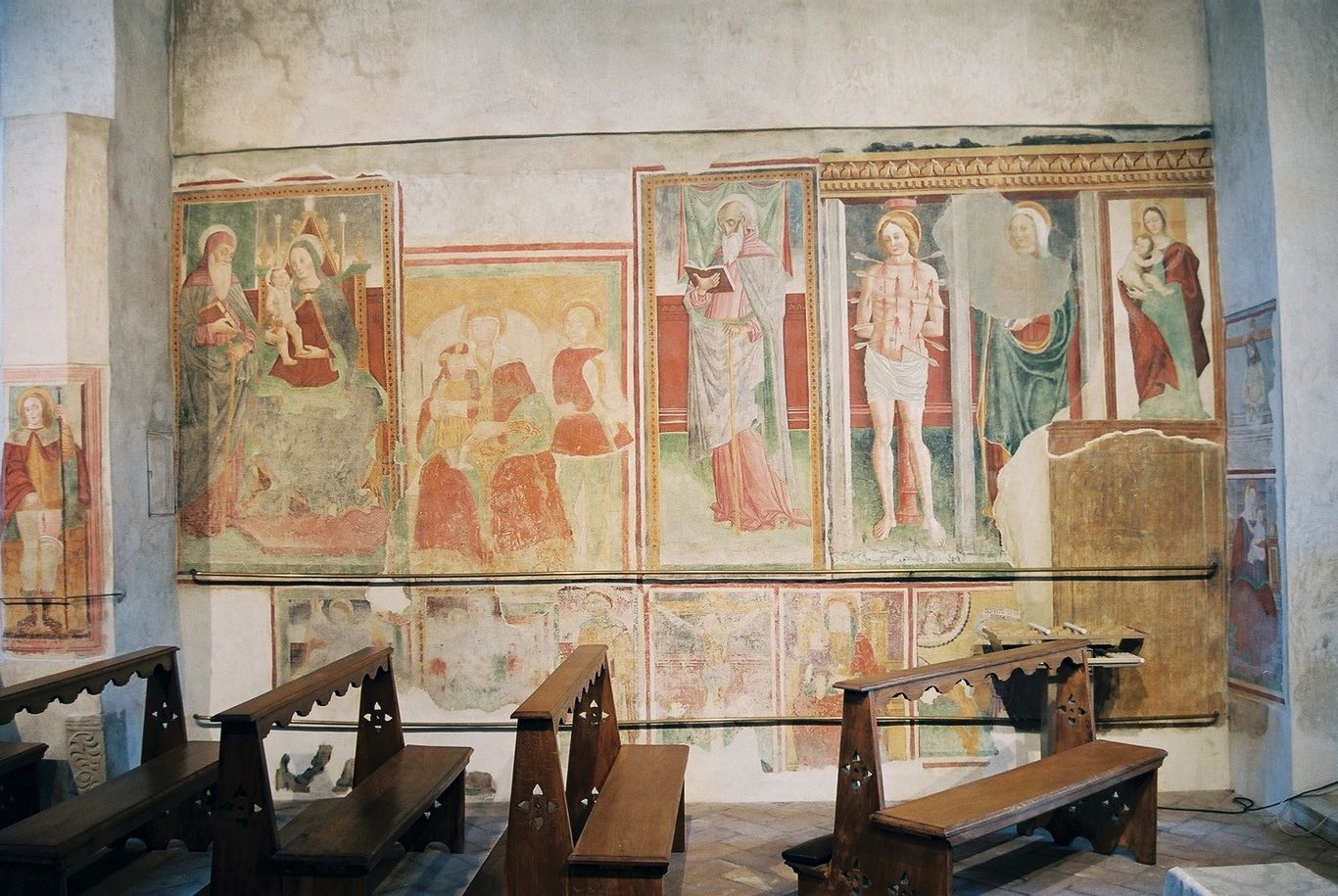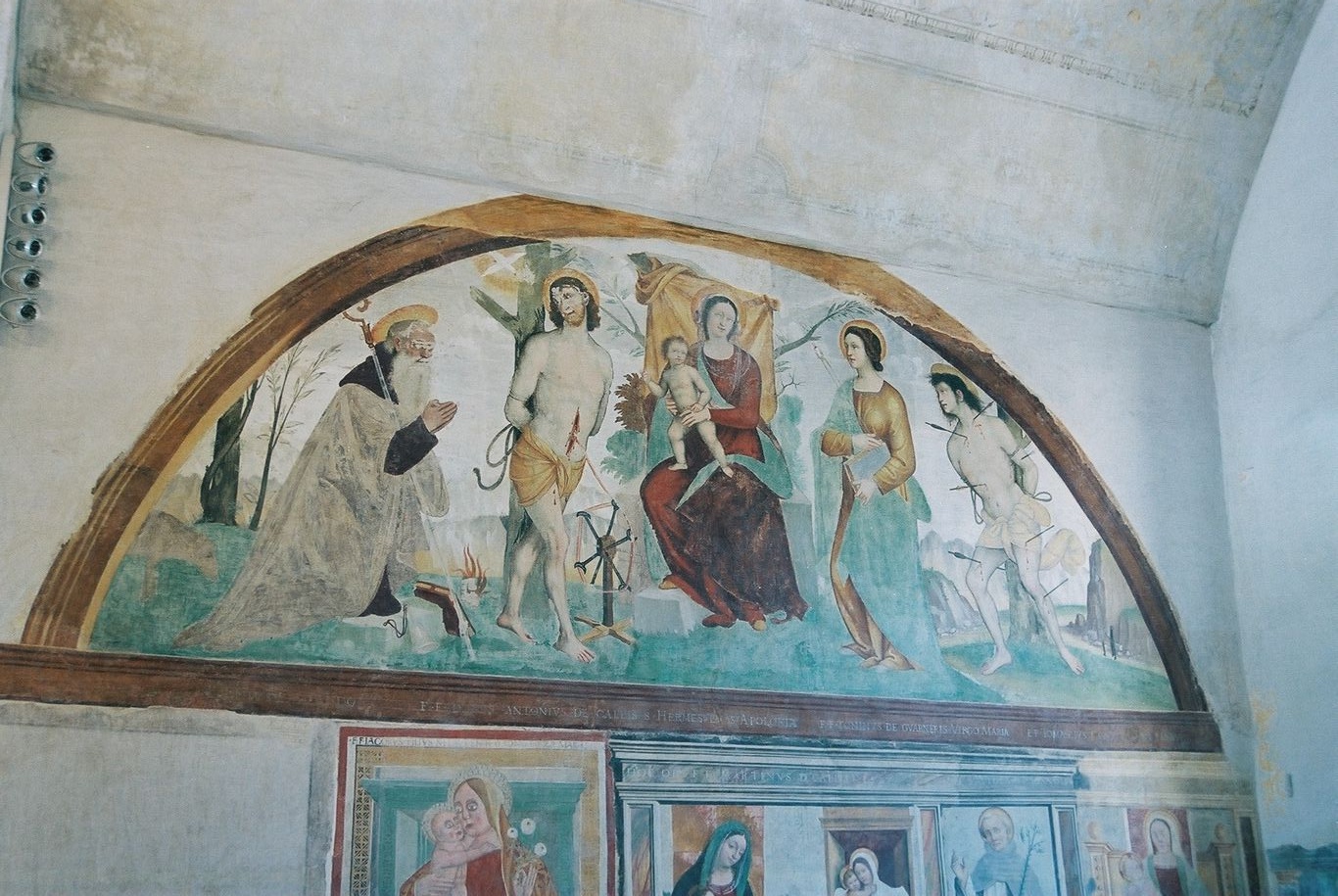



Sanctuary of St. Maria di Lovernato
Elevated in a rural context and in a beaten path since Roman times, the Sanctuary of Santa Maria di Lovernato in Ospitaletto owes its name to the place where it rose, named Luernaco in a document of 807.
Of modest shapes on the outside (with a simple hut profile), it preserves a rich palimpsest of votive frescoes as result of the commissioning of local families; it is not only a pictorial anthology of the masters who worked on the Franciacorta territory between the 15th and 16th centuries, but it can be read as a real documentary archive, since many inscriptions and cartoons remain on the walls and allow to reconstruct some social and historical dynamics of the time.
The wall decoration, completed between 1479 and 1529, presents a perfect division between the nave and the presbytery: in the first there are numerous votive panels dedicated to the Virgin and the saints, while in the second a unitary cycle dedicated to salvation from pestilence and orthodoxy develops.
Most of the frescoes in the nave (where the figure of the Virgin and Child Enthroned is predominant) can be attributed to the Master of San Felice del Benaco, a painter protagonist of many pictorial cycles scattered throughout Brescia; the representation of animals (such as cows and horses) are common in other contexts of Brescia as testimony of a world dominated by the rhythms of the countryside, in which it was necessary to ask for grace for the salvation of those animals necessary for the work of the fields.
In the presbytery, the decoration (completed in the 20s of the 16th century) was entrusted to two important masters commissioned by Brother Benedetto da Rezzato, who is portrayed in prayer at the foot of the altar. While it has not been possible to identify the first artist (whose activities have been found with Francesco Prata da Caravaggio), the identification of the author of the two lunettoni is certain: it is Vincenzo de Barberis, a Brescian artist trained in contact with the great masters of Milan such as Bramantino, Zenale and Bernardino Luini; in Lovernato, the painter creates a sacred conversation that takes place in a natural landscape: the Virgin Mary is flanked by thaumaturgic saints, as Sant’Antonio Abate (frequently invoked for the protection of animals), San Rocco (protector from the plague) and Sant’Erasmo (prayed for protection from intestinal pain).
Translations by Franciacorta da Scoprire.
Photos by Parrocchia di Ospitaletto.












